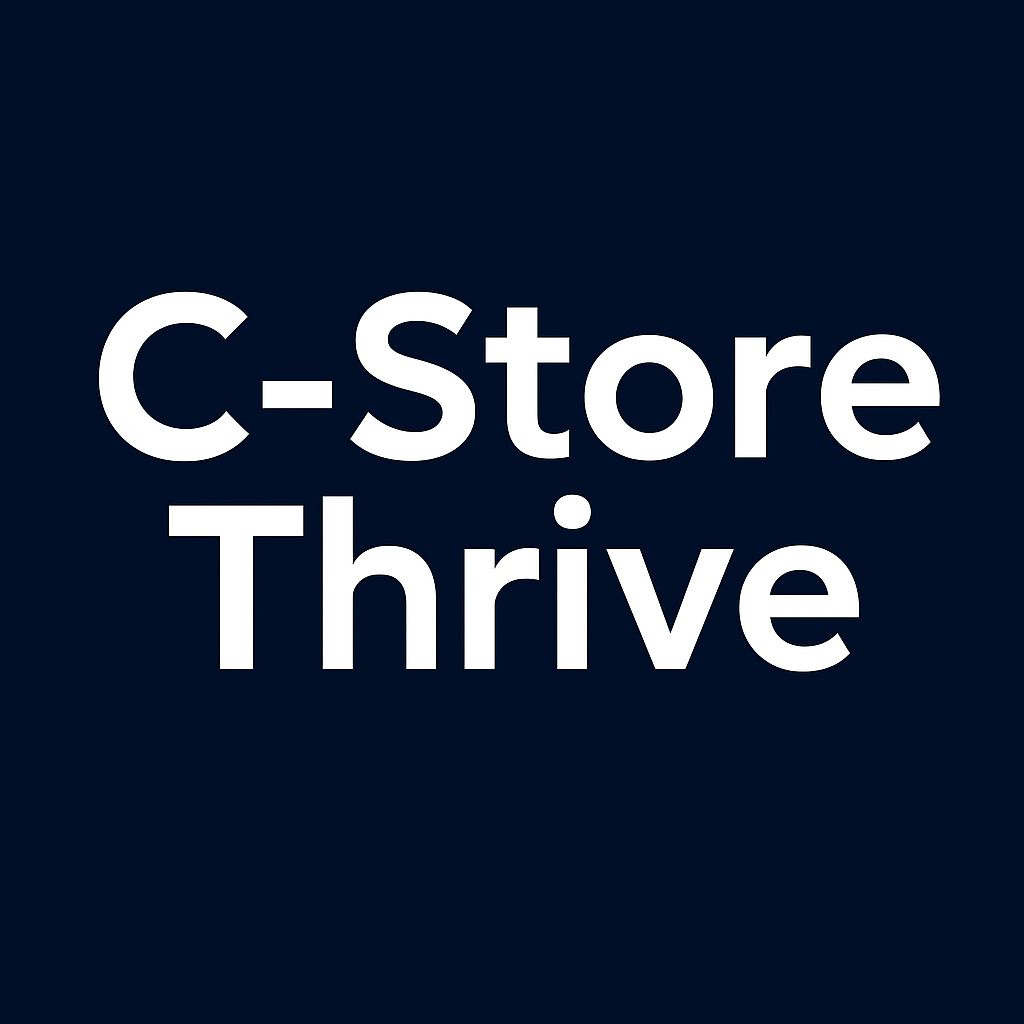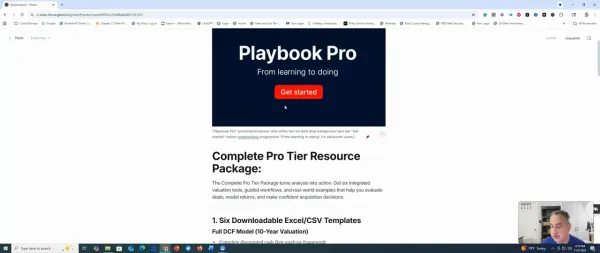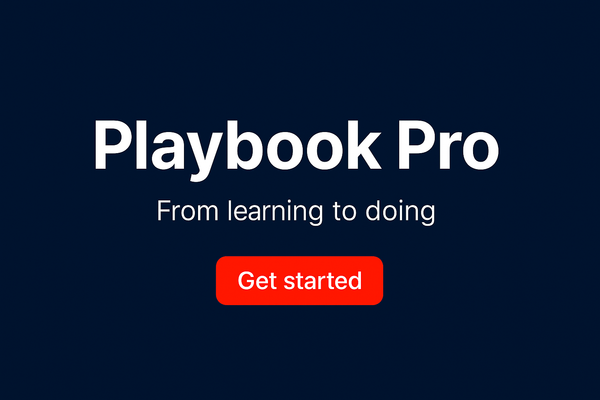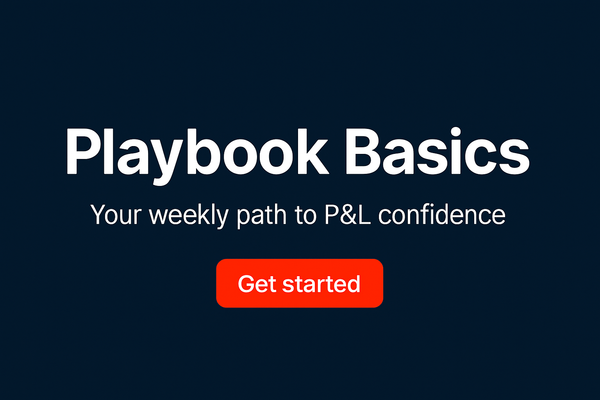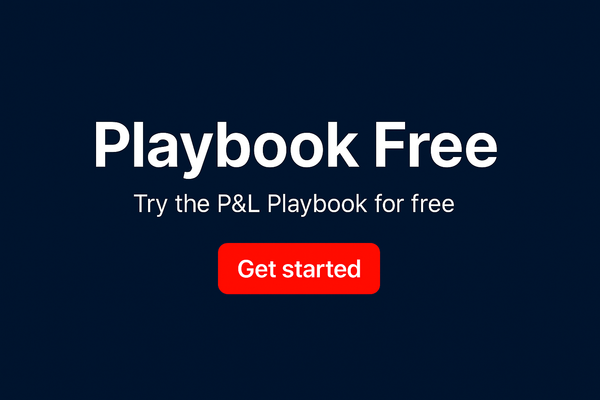Aligning HR Strategy with Store Business Goals
Your people strategy IS your business strategy. Independent C-store owners face 146% annual turnover rates, with each departing employee costing $1,196-3,242 to replace. Strategic HR alignment achieves 30-40% lower turnover and 10-15% higher profitability.
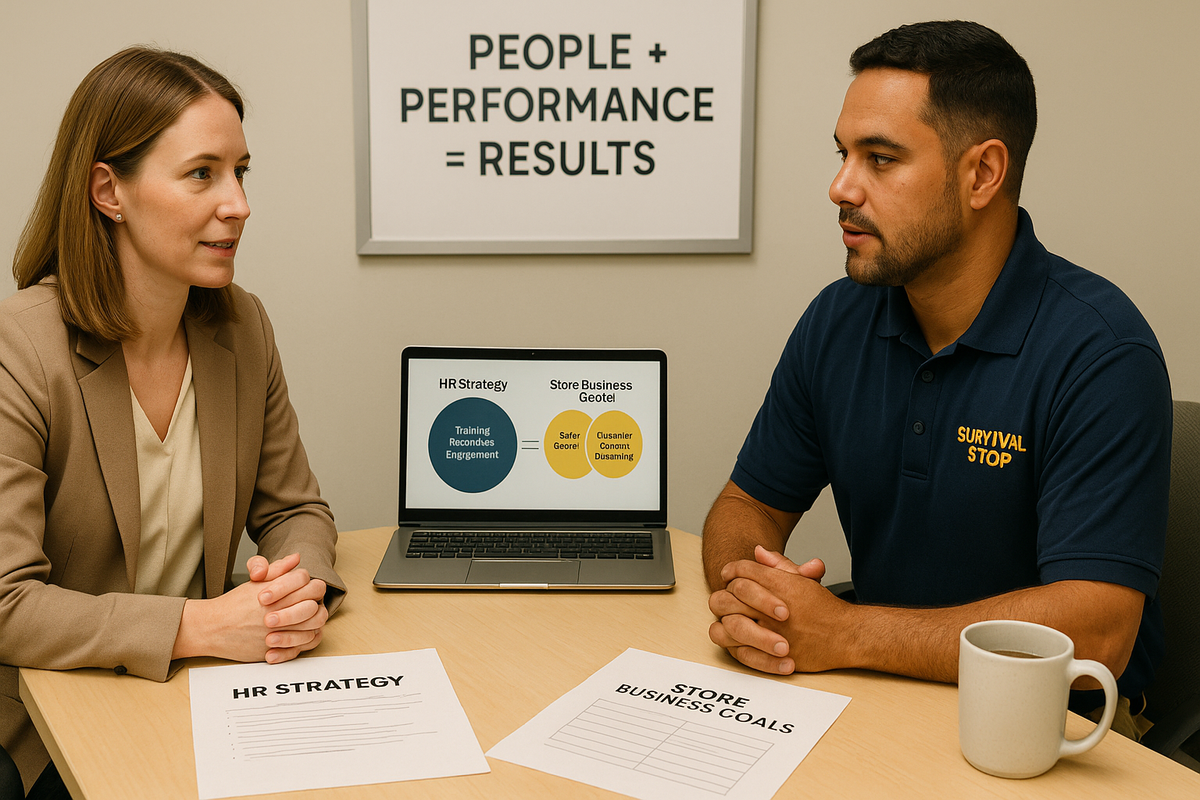
Your people strategy isn't separate from your business strategy—it IS your business strategy. Here's how independent C-store owners can build HR systems that drive profitability, reduce turnover, and create sustainable competitive advantage in a challenging labor market.
Independent convenience store owners face a stark reality: employee turnover rates average 146% annually, with some stores experiencing complete staff turnover every eight months. Meanwhile, labor costs consume 8-14% of revenue—often representing the largest controllable expense after cost of goods sold. Yet most independent operators treat HR as an administrative afterthought rather than the strategic business driver it should be.
The math is unforgiving. Each departing full-time employee costs $1,196 to replace, while losing a manager costs $3,242. With the average C-store employing 8-12 people, poor HR practices can drain $15,000-30,000 annually in unnecessary turnover costs alone. But stores that align their HR strategy with business objectives consistently outperform competitors, achieving 30-40% lower turnover rates and 10-15% higher profitability.
The opportunity has never been greater. Labor market conditions are improving, with C-store turnover dropping from 163% in 2022 to 146% in 2024. Forward-thinking independent operators are seizing this moment to build strategic HR capabilities that will provide competitive advantage for years to come.
The Strategic Framework: HR as Business Driver
Beyond Compliance: HR as Competitive Advantage
Traditional HR focuses on compliance, payroll processing, and damage control. Strategic HR aligns every people decision with business outcomes. For C-stores, this means connecting HR activities directly to key performance indicators:
Revenue Growth: Right people in right positions driving sales per square foot
Margin Protection: Skilled employees reducing shrinkage and improving operational efficiency
Customer Experience: Engaged staff creating loyalty and repeat visits
Scalability: Systems and processes that support growth without proportional increases in management overhead
The C-Store HR Challenge Matrix
Independent operators must navigate unique HR complexities that large chains handle through dedicated departments:
Operational Demands:
- 24/7 coverage requiring flexible scheduling systems
- Multiple skill sets from food service to fuel handling to age-restricted sales
- Safety-critical roles with high liability exposure
- Peak-time staffing during morning and evening rush periods
Labor Market Realities:
- Competition with gig economy offering schedule flexibility
- Rising wage expectations without corresponding productivity increases
- Generational differences in work preferences and communication styles
- Local talent pool limitations in smaller markets
Regulatory Complexity:
- Multiple compliance requirements from food safety to tobacco sales
- Wage and hour laws varying by jurisdiction
- Workers' compensation issues in high-risk retail environment
- Equal employment opportunity obligations despite small staff sizes
Foundational Strategy #1: Data-Driven Staffing Models
Understanding Your Labor Investment
Most independent operators staff based on intuition rather than data. Strategic HR begins with understanding the mathematical relationship between labor investment and business outcomes:
Labor Efficiency Ratio: Total labor cost ÷ Total sales
- Industry benchmark: 10-14% of sales
- High-performing stores: 8-12% of sales
- Struggling operations: 15%+ of sales
Sales per Labor Hour: Total sales ÷ Total labor hours worked
- Morning shift target: $80-120 per hour
- Evening shift target: $60-100 per hour
- Overnight target: $40-80 per hour
Strategic Scheduling for Maximum ROI
Predictive scheduling based on historical data and local patterns dramatically improves labor ROI:
Traffic-Based Staffing:
text
Monday-Thursday: Base staffing + 1 during 6-9 AM and 4-7 PM
Friday: +20% staffing for evening rush
Saturday: Peak staffing 10 AM-8 PM
Sunday: Moderate staffing with focus on 12-6 PM
Skills-Based Deployment:
- Food service certified employees during breakfast and lunch rushes
- Experienced cashiers during high-transaction periods
- Security-trained staff for overnight shifts
- Maintenance-capable employees during slower periods
Technology Integration for Efficiency
Modern workforce management systems provide capabilities that were previously available only to large chains:
Automated Scheduling Features:
- Demand forecasting based on weather, local events, and historical patterns
- Labor law compliance checking overtime rules and break requirements
- Employee self-service for shift swapping and time-off requests
- Real-time adjustments based on actual vs. projected sales
Foundational Strategy #2: Compensation Architecture
Market-Competitive Base Wages
Pay competitively or pay constantly—in recruitment costs, training expenses, and operational disruption:
2025 Compensation Benchmarks:
- Store Manager: $45,000-65,000 annually plus performance bonuses
- Assistant Manager: $35,000-45,000 annually
- Experienced Associate: $16-20 per hour
- New Hire: $14-17 per hour (depending on local minimum wage)
Geographic Adjustments:
- Urban markets: +10-20% above baseline
- Rural markets: Baseline to +10%
- High cost-of-living areas: +15-25%
- Competitive markets: +5-15% premium for retention
Performance-Based Incentive Systems
Fixed wages alone don't drive performance. Strategic compensation includes variable elements tied to business results:
Individual Performance Metrics:
- Customer service scores: $0.25-0.50 hourly bonus for ratings above 4.5/5
- Shrinkage reduction: Quarterly bonuses for inventory accuracy improvements
- Upselling success: Commission on food service add-ons and promotional items
- Attendance reliability: Perfect attendance bonuses
Team-Based Incentives:
- Store profitability sharing: 1-3% of monthly profit improvement distributed to staff
- Safety performance: Quarterly bonuses for accident-free operations
- Customer growth: Rewards for increased transaction counts and average tickets
Benefits Strategy for Small Operations
You can't match corporate benefits, but you can offer what matters most:
High-Value, Low-Cost Benefits:
- Schedule flexibility: Worth $2-3 per hour in retention value
- Skill development: Paid training that increases employee marketability
- Recognition programs: Public acknowledgment of achievements
- Employee discounts: Meaningful savings on everyday purchases
Health and Wellness Options:
- Healthcare stipends: $100-300 monthly toward individual health plans
- Wellness programs: Gym membership reimbursements or on-site health screenings
- Mental health support: Employee assistance program access
- Financial wellness: Basic financial planning and budgeting resources
Foundational Strategy #3: Talent Acquisition Systems
Recruitment as Marketing
Great employees choose you as much as you choose them. Modern recruitment requires marketing mindset and tools:
Employer Brand Development:
- Company culture stories: Current employees sharing positive experiences
- Growth opportunity showcases: Examples of internal promotions and skill development
- Community involvement: Local sponsorships and charity work highlighting company values
- Social media presence: Regular posts about team achievements and workplace culture
Multi-Channel Recruitment Approach:
- Employee referral programs: $500-1,000 bonuses for successful hires who stay 90+ days
- Local partnerships: High schools, community colleges, and workforce development programs
- Digital platforms: Indeed, ZipRecruiter, and industry-specific job boards
- Community networks: Chamber of commerce, church groups, and neighborhood associations
Streamlined Selection Process
Speed wins in today's labor market. Top candidates are off the market within 3-5 days:
Efficient Hiring Workflow:
text
Day 1: Application received and initially screened
Day 2: Phone screening completed
Day 3: In-person interview scheduled and conducted
Day 4: Background check initiated and references checked
Day 5: Offer made and accepted
Day 8: Start date (allowing for two-week notice)
Interview Structure for Consistency:
- Behavioral questions: Past performance predicting future results
- Situational scenarios: Customer service and problem-solving abilities
- Cultural fit assessment: Values alignment and team compatibility
- Skills demonstration: Role-playing exercises for customer interaction
Foundational Strategy #4: Onboarding for Retention
The Critical First 90 Days
36% of new hires leave within their first month. Strategic onboarding dramatically improves retention:
Week 1: Foundation Setting
- Store tour and safety training: Physical environment and emergency procedures
- System training: POS, inventory management, and basic troubleshooting
- Product knowledge: Key categories, pricing, and promotional programs
- Mentorship assignment: Pairing with experienced, positive team member
Week 2-4: Skill Building
- Customer service protocols: Handling complaints, returns, and difficult situations
- Compliance training: Age verification, tobacco sales, and food safety requirements
- Operational procedures: Opening/closing routines, cash handling, and inventory processes
- Performance expectations: Clear metrics and feedback mechanisms
Month 2-3: Integration and Growth
- Advanced training: Food service preparation, vendor relations, or specialized systems
- Increased responsibility: More independent work with reduced supervision
- Performance review: Formal feedback and development planning
- Career path discussion: Long-term opportunities and skill development needs
Measuring Onboarding Effectiveness
Track leading indicators of retention success:
30-Day Metrics:
- Training completion rate: 100% completion of required modules
- Performance competency: Meeting job requirements independently
- Cultural integration: Positive peer feedback and team collaboration
- Engagement scores: Self-reported job satisfaction and commitment levels
90-Day Outcomes:
- Retention rate: 85%+ of new hires still employed
- Performance standards: Meeting or exceeding expectations in all key areas
- Growth readiness: Identified for additional responsibilities or training
- Advocate potential: Likelihood to recommend company to others
Foundational Strategy #5: Performance Management Systems
Continuous Feedback Culture
Annual reviews are insufficient for fast-paced retail environments. Implement ongoing performance management:
Weekly Check-ins:
- Performance highlights: Celebrating successes and positive customer feedback
- Challenge identification: Addressing issues before they become problems
- Skill development: Identifying training needs and growth opportunities
- Goal adjustment: Modifying objectives based on changing business needs
Monthly Formal Reviews:
- Quantitative assessment: Sales metrics, attendance, and customer feedback scores
- Qualitative evaluation: Teamwork, attitude, and professional development progress
- Goal setting: Specific, measurable objectives for the upcoming month
- Career development: Discussing advancement opportunities and required skills
Recognition and Accountability Framework
Balance positive reinforcement with clear expectations:
Recognition Programs:
- Employee of the Month: Public recognition with monetary reward and preferred parking
- Customer service awards: Highlighting exceptional customer feedback
- Team achievement celebrations: Group rewards for store-wide goals
- Peer nominations: Employees recognizing each other's contributions
Accountability Systems:
- Progressive discipline: Clear steps from coaching to termination
- Documentation processes: Consistent record-keeping for all performance issues
- Improvement plans: Specific, time-bound expectations for performance recovery
- Fair treatment standards: Equitable application of policies across all employees
Advanced Strategy: Building Leadership Pipeline
Manager Development Program
Great managers are made, not born. Systematic leadership development reduces turnover and improves store performance:
Leadership Training Curriculum:
- Communication skills: Difficult conversations, active listening, and team meetings
- Conflict resolution: Mediating disputes and maintaining team harmony
- Business acumen: Understanding P&L, inventory management, and cost control
- Coaching techniques: Developing employees and improving performance
Succession Planning Process:
- High-potential identification: Recognizing employees with leadership potential
- Skill gap analysis: Assessing development needs for advancement
- Mentorship programs: Pairing potential leaders with experienced managers
- Gradual responsibility increase: Testing leadership capabilities in low-risk situations
Multi-Store Growth Preparation
Scalable HR systems enable expansion without proportional increases in administrative overhead:
Standardized Processes:
- Consistent job descriptions: Clear role expectations across all locations
- Uniform training programs: Standardized onboarding and development curricula
- Centralized recruitment: Shared talent pool and hiring processes
- Common performance metrics: Comparable standards and measurement systems
Technology Integration for HR Excellence
HR Information Systems for Small Operations
You don't need enterprise-level systems to achieve professional-grade HR management:
Core HR Technology Stack:
- Payroll processing: ADP, Paychex, or Gusto for automated wage and tax management
- Scheduling software: When I Work, 7shifts, or Legion for optimized staff planning
- Performance tracking: BambooHR or similar for employee records and reviews
- Learning management: TalentLMS or similar for consistent training delivery
Integration Benefits:
- Reduced administrative time: 50-70% reduction in HR paperwork and manual processes
- Improved compliance: Automated tracking of labor law requirements
- Better decision-making: Data-driven insights into HR effectiveness and ROI
- Enhanced employee experience: Self-service options and mobile accessibility
Measuring HR Strategy Success
Key Performance Indicators
Track metrics that connect HR activities to business outcomes:
Financial Impact Metrics:
- Revenue per employee: Target $150,000-200,000 annually
- Labor cost percentage: Maintain 10-12% of total sales
- Turnover cost savings: Calculate reduction in recruitment and training expenses
- Productivity improvements: Sales per labor hour trending upward
Employee Experience Metrics:
- Turnover rate: Target 75-100% (well below industry average)
- Time to fill positions: Average 7-10 days from posting to hire
- Employee satisfaction: Survey scores of 4.0+ out of 5.0
- Internal promotion rate: 50%+ of management positions filled internally
ROI Calculation Framework
Demonstrate HR strategy value through measurable returns:
text
HR Strategy ROI = (Financial Benefits - HR Investment) ÷ HR Investment × 100
Example Calculation:
Annual Savings from Reduced Turnover: $25,000
Performance Improvements Value: $15,000
Technology and Training Investment: $12,000
ROI = ($40,000 - $12,000) ÷ $12,000 × 100 = 233%
Implementation Roadmap
Phase 1: Foundation (Months 1-3)
Establish basic systems and processes:
- Implement data-driven scheduling and labor management
- Develop competitive compensation structure with performance incentives
- Create streamlined recruitment and onboarding processes
- Begin tracking key HR metrics and business outcomes
Phase 2: Optimization (Months 4-8)
Refine systems based on initial results:
- Enhance training programs based on performance data
- Implement advanced recognition and accountability systems
- Develop manager leadership capabilities and succession planning
- Integrate technology solutions for efficiency and scalability
Phase 3: Strategic Advantage (Months 9-12)
Leverage HR capabilities for competitive differentiation:
- Build employer brand and recruitment marketing capabilities
- Create comprehensive employee development programs
- Establish multi-store scalability systems
- Measure and demonstrate HR strategy ROI
Conclusion: Your People Advantage
In an industry where the difference between success and failure often comes down to a few percentage points of margin, strategic HR management represents one of the highest-ROI investments independent operators can make. The stores thriving in today's challenging environment aren't necessarily those with the best locations or lowest prices—they're those with engaged, skilled employees delivering exceptional customer experiences while operating efficiently.
The opportunity window is open. Labor market conditions are stabilizing, technology solutions are becoming affordable for small operators, and consumers are increasingly valuing personalized service that independent stores can provide better than large chains. The question isn't whether you can afford to invest in strategic HR—it's whether you can afford not to.
Start with the fundamentals: data-driven scheduling, competitive compensation, efficient recruitment, and systematic onboarding. Build on early successes by adding performance management systems, leadership development, and technology integration. Measure everything, iterate quickly, and always connect HR activities to business outcomes.
Remember that HR strategy isn't about creating perfect systems—it's about building sustainable competitive advantage through your people. Every employee retained, every skill developed, and every operational improvement achieved through better HR practices directly impacts your bottom line and long-term viability.
The convenience store industry is evolving rapidly, with new challenges and opportunities emerging constantly. The operators who master strategic HR management will be best positioned to navigate this evolution successfully, creating thriving businesses that serve their communities while delivering strong financial returns.
Ready to transform your HR approach from administrative burden into strategic advantage? Start by analyzing your current turnover costs and labor efficiency metrics, then systematically implement the foundational strategies outlined above. The investment in strategic HR capabilities will pay dividends through improved profitability, reduced operational stress, and sustainable competitive positioning in your market.
